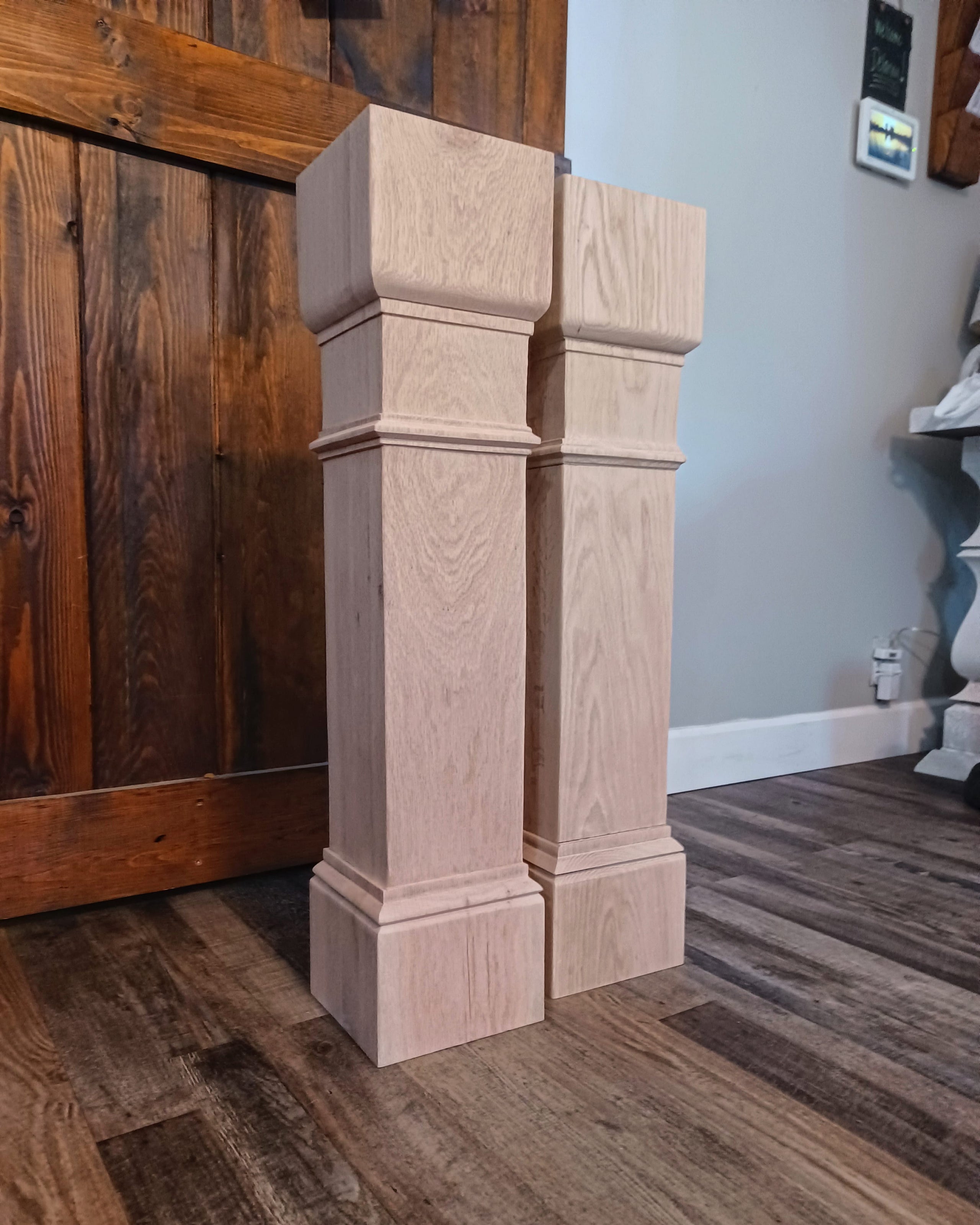Make Your Kitchen Island Stand Out with Customized Legs For Kitchen Island
Vital Aspects to Think About When Selecting Legs For Cooking Area Island
Choosing the appropriate legs for a kitchen area island entails a careful evaluation of multiple elements that can dramatically influence both performance and visual appeal. As we check out these components, it becomes clear that each choice can have far-ranging implications for the general cooking area experience.
Material Options
When choosing legs for a cooking area island, recognizing the various material alternatives is essential for accomplishing both visual allure and architectural integrity (Legs For Kitchen Island). The option of product dramatically affects not only the sturdiness of the island yet additionally its overall design and performance
Steel legs, often made from stainless steel or functioned iron, add a modern-day and commercial feel while ensuring resilience and stability. These products are immune to use and can support substantial weight, making them ideal for bigger islands.
An additional choice is engineered materials, like MDF or plywood, which can be extra cost-efficient while still providing a range of coatings. Nonetheless, they may not offer the same degree of stability as solid timber or steel. Products such as acrylic or glass can create a modern look, though they may call for additional assistance to make sure stability.
Inevitably, the selection of product for kitchen area island legs should line up with the desired capability and the general motif of the kitchen area.
Design and Style

When considering style, the shape and coating of the legs are critical. Tapered legs can provide a feeling of agility and style, while thicker, extra durable legs can communicate stamina and stability. Additionally, the finish-- be it painted, tarnished, or all-natural-- must match the cabinets and countertop materials to develop a unified appearance.
Additionally, the style of the legs can also reflect individual preference. Customized or decorative legs, such as those including detailed carvings or distinct geometric forms, can work as centerpieces, adding personality and character to the kitchen. Inevitably, the appropriate option will not just improve functionality yet likewise elevate the visual charm, making the kitchen island a standout attribute of the home.
Height Considerations
Picking the suitable elevation for kitchen area island legs is essential, as it straight affects both functionality and convenience. The basic elevation for a kitchen area island typically ranges from 36 to 42 inches, straightening with typical countertop elevations. A 36-inch height is excellent for cooking and food preparation, permitting for comfortable use cooking area appliances and devices. Conversely, an elevation of 42 inches is frequently favored for islands intended for bar seats, accommodating taller stools and supplying a laid-back eating experience.

It is additionally important to account for customers' heights and choices. Personalizing the height can make certain a comfortable experience for all member of his response the family, making the kitchen island a much more enjoyable and useful area.
Weight Assistance
Making sure adequate weight assistance for kitchen island legs is crucial for both safety and performance. The cooking area island typically offers several objectives, including cooking, eating, and additional storage space, demanding a robust support framework. When selecting legs, it is vital to consider the general weight ability required based on the island's planned usage and the materials that will be positioned on it.
The choice of material for the legs plays a substantial role in their weight-bearing capabilities. Strong timber, steel, and heavy-duty composites normally give exceptional stamina contrasted to lighter products. Furthermore, the style of the legs-- whether they are directly, tapered, or have a pedestal kind-- can influence their capacity to disperse weight properly throughout the structure.
In addition, the leg positioning must be purposefully intended to boost security. Legs placed at the edges or with a wider base can better support heavier tons. Always seek advice from the supplier's specifications regarding load limits to guarantee that the legs can sustain the designated weight without jeopardizing security. In summary, choosing kitchen area island legs with sufficient weight support is vital for producing a practical and safe culinary space.
Installment and Upkeep
Correct setup and upkeep of kitchen area island legs are essential index for making sure longevity and stability. This often includes safeguarding the legs to the island base utilizing ideal fasteners, making sure that the legs are level and lined up.
As soon as installed, routine upkeep is required to protect the integrity and appearance of the legs - Legs For Kitchen Island. For wood legs, routine cleaning with a moist towel and application of suitable wood gloss can protect against moisture damages and keep their finish. Metal legs might call for a gentle cleaning option to get rid of oil and grime, complied with by a completely dry towel to stop rust development
Additionally, examine the legs consistently for indicators of wear or damages, such as splits or loosened joints. Tightening up screws or screws as required can additionally lengthen the life-span of the legs. By sticking to these installment and upkeep techniques, house owners can make certain that their cooking area island continues to be strong and aesthetically appealing for many years to find.
Final Thought

Aesthetic coherence is critical in choosing the design and layout of legs for a cooking area island, as these components greatly influence the overall atmosphere of the area. Tapered legs can supply a feeling of agility and sophistication, while thicker, extra durable legs can share toughness and security.Picking the ideal elevation for cooking area island legs is critical, as it straight influences both capability and convenience. In recap, choosing kitchen area island legs with appropriate weight have a peek at this website support is vital for producing a functional and safe cooking room.
In final thought, choosing legs for a kitchen area island necessitates careful factor to consider of numerous aspects, including material alternatives, design, height, weight support, and installation.